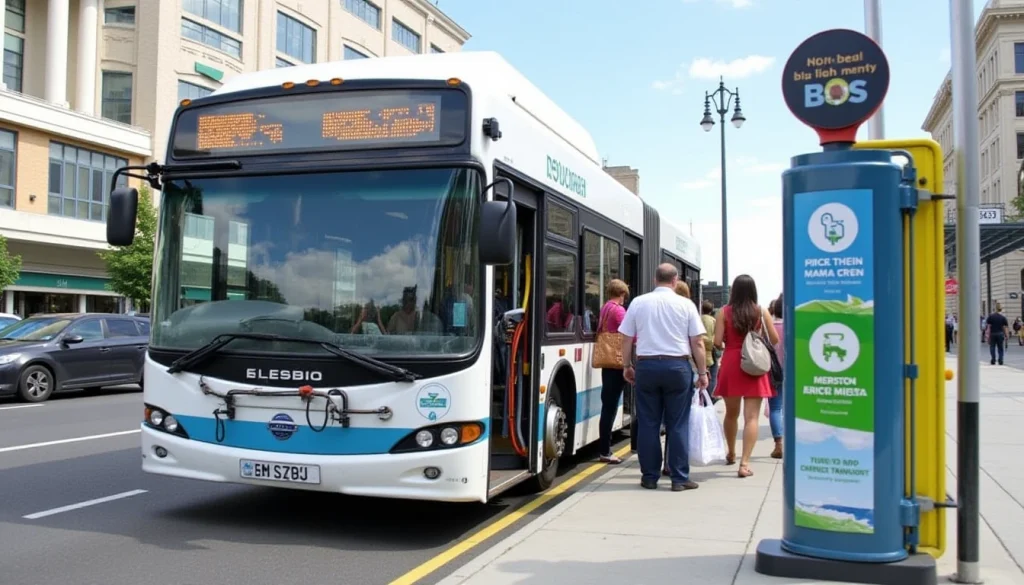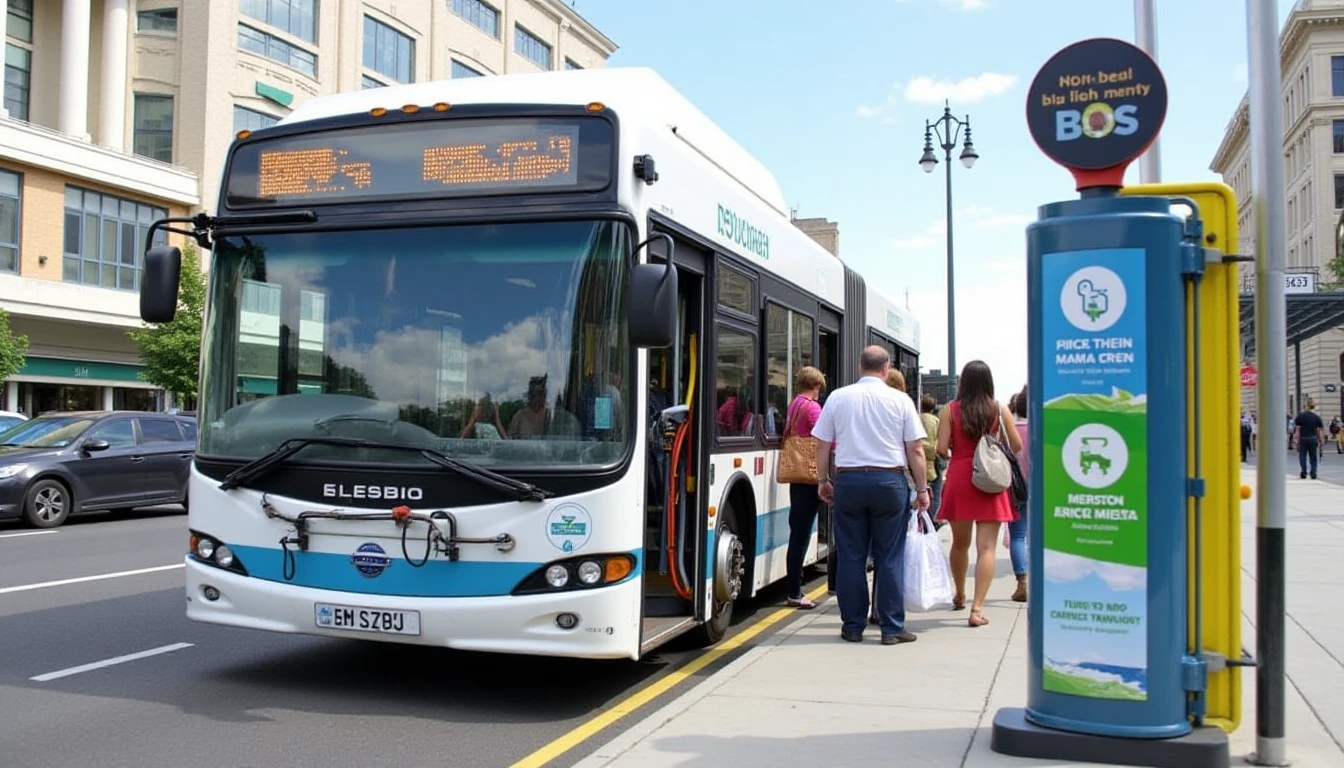Choosing Eco-Friendly Accommodations
When embarking on a journey to reduce your carbon footprint while exploring the world, one of the first steps you can take is to choose eco-friendly accommodations. This not only supports sustainable tourism practices but also contributes positively to local ecosystems and communities.
Eco-friendly hotels and resorts prioritize energy efficiency, water conservation, and waste reduction in their day-to-day operations. Many use renewable energy sources such as solar power or wind turbines to generate electricity, reducing reliance on fossil fuels. Additionally, these establishments often implement green building techniques that enhance insulation and air circulation, leading to significant reductions in heating and cooling costs while maintaining comfort for guests. By staying at such accommodations, travelers can rest assured they are making a positive impact on the environment.
Another important aspect of eco-friendly lodging is its commitment to reducing waste through recycling programs and minimizing single-use plastics within their facilities. This includes initiatives like providing refillable water bottles instead of disposable plastic containers, using biodegradable toiletries, and encouraging guests to reuse linens rather than having them washed daily. These small changes can significantly lower the environmental impact associated with accommodation services while promoting a more sustainable travel experience.
Moreover, eco-friendly accommodations frequently collaborate with local conservation projects or NGOs dedicated to preserving natural resources and wildlife habitats. By staying at these properties, travelers have the opportunity not only to enjoy their vacation but also support ongoing efforts towards protecting biodiversity and maintaining ecological balance. For instance, some hotels participate in tree-planting initiatives or marine conservation programs that directly benefit from guest participation or financial contributions made possible by eco-conscious tourism practices.
Opting for Sustainable Transportation
Opting for sustainable transportation is an essential step towards reducing your carbon footprint while traveling. This involves making conscious choices about how you move around both within destinations and between different locations during your trip. By prioritizing environmentally friendly modes of transport, you can significantly minimize the negative impact on climate change and contribute to a healthier planet.
One of the most effective ways to reduce emissions from transportation is by walking or biking whenever possible. These zero-emission methods are not only good for the environment but also offer unique opportunities to experience local culture up close. Imagine exploring cobblestone streets lined with charming shops, markets brimming with fresh produce, and parks filled with families enjoying leisurely afternoons—all without contributing any greenhouse gases. Not only will this approach help you get more acquainted with your surroundings, but it can also lead to healthier habits by increasing physical activity levels.
Public transportation systems such as buses, trains, or subways offer another viable option for those looking to travel sustainably while abroad. Many cities across the globe have invested heavily in developing efficient public transit networks that connect various parts of urban areas and even extend into rural regions nearby. By utilizing these services instead of renting cars or taking taxis, travelers can greatly decrease their overall carbon emissions per mile traveled. Furthermore, riding mass transport allows for better interaction with locals who often use similar means daily; this provides an authentic glimpse into everyday life which might otherwise be missed.
In addition to conventional forms of public transit, there has been a growing trend towards adopting electric vehicles (EVs) for personal mobility solutions during vacations. Electric bikes and scooters are becoming increasingly popular among tourists due not only because they produce no direct emissions but also because they allow visitors greater flexibility compared with fixed routes followed by buses or trains. Moreover, many hotels now offer charging stations specifically designed for EV users who wish to explore further afield without worrying about refueling costs traditionally associated with gasoline-powered engines.

Embracing Carbon Offsetting Practices
Embracing carbon offsetting practices is another crucial way to reduce your environmental impact while traveling. This involves compensating for the emissions produced during travel by investing in projects that help mitigate climate change elsewhere. By participating in such initiatives, you can effectively neutralize part of the ecological footprint left behind from your journey.
Carbon offsets typically fund projects ranging from reforestation efforts aimed at absorbing CO2 from the atmosphere through photosynthesis to renewable energy installations like wind farms or solar panels which generate clean power without emitting harmful pollutants into the air. These programs are designed with careful consideration regarding both their potential long-term benefits as well as immediate positive impacts on communities where they operate.
One effective method for supporting carbon offset projects is purchasing verified credits from reputable organizations specializing in this field. Many airlines now offer passengers an option to purchase offsets directly when booking flights online or check-in at airports before departure. Alternatively, independent platforms provide users access to detailed information about available options alongside tools necessary to calculate individual estimates based upon specific travel patterns.
Another approach worth considering involves engaging directly with local organizations operating within destination countries themselves rather than relying solely on global entities headquartered elsewhere. Doing so not only helps ensure funds reach intended recipients more efficiently but also fosters stronger connections between visitors and host communities by promoting mutual understanding while simultaneously contributing towards shared goals related to environmental preservation efforts worldwide.
Exploring Local Cuisine
Exploring local cuisine is a rewarding way to reduce your carbon footprint while traveling, as it encourages sustainable practices in food consumption. By choosing locally sourced ingredients and traditional cooking methods, you can support the environment and enrich your travel experience.
Eating at restaurants or markets that emphasize seasonal produce helps ensure minimal transportation distances for fresh goods, reducing fossil fuel consumption associated with long-distance shipping. Additionally, this approach promotes biodiversity by encouraging farmers to grow a wider variety of crops suited specifically for their region rather than relying heavily on imported items not naturally adapted there. As a result, local ecosystems benefit from increased plant diversity which leads to healthier soil quality over time.
Furthermore, opting for traditional recipes passed down generations often uses cooking techniques designed with energy efficiency in mind – such as slow roasting or steaming instead of frying at high temperatures – further lowering overall carbon output throughout preparation processes without compromising flavor profiles. Moreover, many indigenous dishes incorporate ingredients derived from wild plants found abundantly around one’s home area rather than cultivated crops requiring large amounts fertilizers pesticides harmful not only to human health but also pollinators essential for maintaining productive agricultural systems globally.
Lastly, supporting local businesses through dining choices strengthens community ties while simultaneously stimulating economic growth within those areas visited. By purchasing directly from small-scale producers or family-run eateries rather than multinational chains, travelers help sustain livelihoods dependent upon tourism revenues thereby creating ripple effects beneficial beyond just individual establishments themselves but entire regions relying heavily on visitor expenditures to thrive economically speaking.
Integrating Lessons Learned into Everyday Life
Integrating lessons learned during your travels back home can be a powerful way to continue reducing your carbon footprint and promoting sustainable living. By adopting practices you discovered abroad, you can create lasting changes in your personal routines that benefit both the environment and society.
One key takeaway from eco-friendly accommodations is the importance of energy conservation. Simple adjustments like turning off lights when leaving rooms, using power strips to prevent standby mode consumption by electronics not actively being used, and investing in LED bulbs which consume less electricity but produce brighter light can all make significant differences over time. Incorporating these habits into daily life helps conserve natural resources while lowering utility bills for homeowners.
Another valuable lesson comes from embracing public transportation systems or biking/walking alternatives discovered abroad. Encouraging friends and family members to consider similar modes of travel when possible reduces individual reliance on personal vehicles which are among the largest contributors towards global warming due primarily to emissions produced during combustion processes within internal combustion engines. Additionally, walking or cycling provides additional health benefits including improved cardiovascular fitness levels plus reduced risk factors associated with sedentary lifestyles.
Lastly, integrating dietary preferences observed while exploring local cuisines offers yet another opportunity for positive change back home. Incorporating more plant-based meals into your diet not only supports environmentally friendly agricultural practices but also promotes overall better health through increased consumption of vitamins minerals found abundantly within fruits vegetables legumes grains compared with animal products known sometimes contain higher saturated fat cholesterol levels linked cardiovascular diseases chronic illnesses later life stages.





